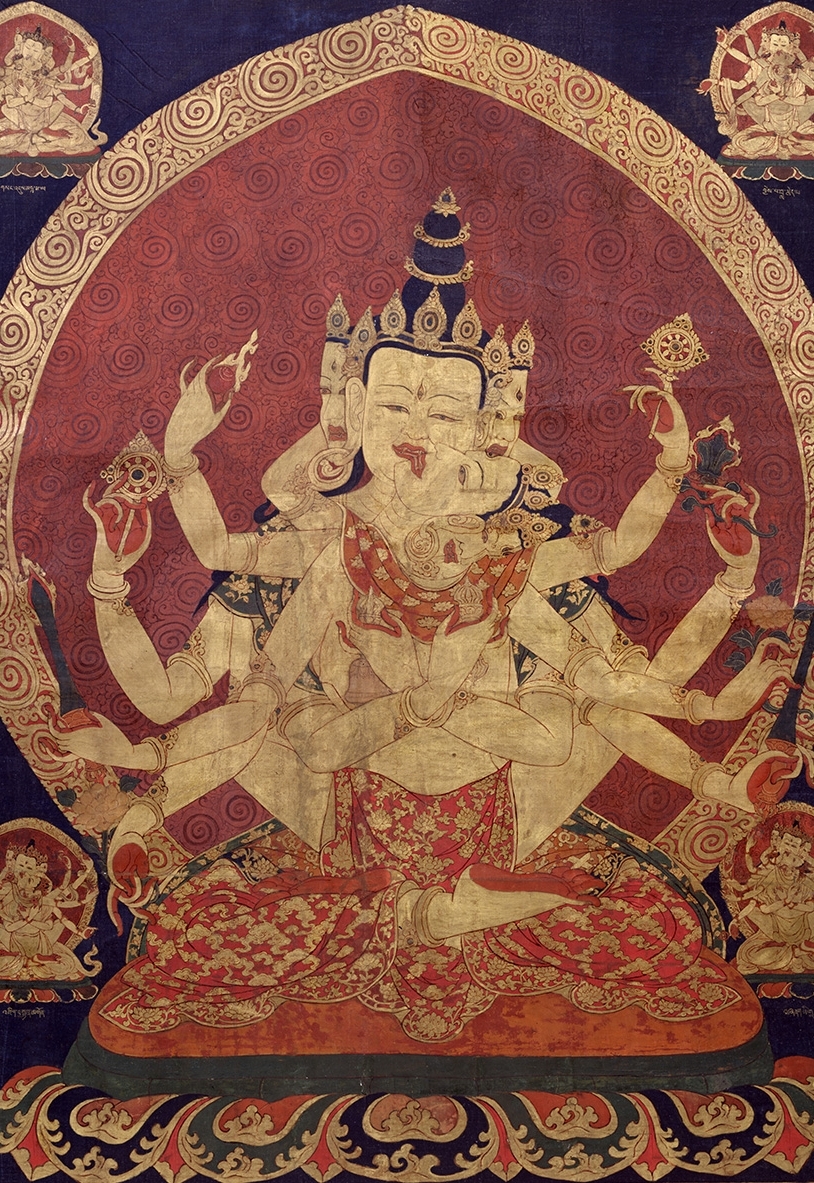
The meditation deity Akshobhyavajra, described in the Secret Assembly (Guhyasamaja) Tantra, symbolically unites the Five Buddha Families. Three-headed, six-armed, holding a vajra and bell, and embracing a consort, he represents the ultimate form of Buddha Akshobhya and the unification of method and wisdom that allows one to overcome duality.
In this painting many of the stylistic elements, including the faces, the scrollwork background, and the hierarchical organization, are reminiscent of early Tibetan art. In contrast, the fullness of the deities’ garments and their patterns—such as the Chinese-inspired flowers and clouds—the gilding of all the figures, and the sense of movement are more recent developments that emerged with the Khyenri painting tradition in the fifteenth century.
30 x 23 in.
F1997.31.13, HAR487
- https://dev.rubinmuseum.org/images/content/806/f1997.31.13__zoom.jpg
- https://dev.rubinmuseum.org/images/content/806/f1997.31.13__zoom.jpg

